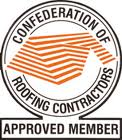Saveing Money with Loft Insulation
With loft insulation, you can make massive savings on your energy bills. While getting loft insulation may seem like too much of a stretch on finances that are already being squeezed, if you can install insulation in your loft the cash you could save will pay that off in no time at all.
Over around 40 years, which is how long good loft insulation should last, you’ll make massive annual savings year after year. It’s estimated that you could save as much as £175 a year with loft insulation at a depth of 0 to 270mm – meaning that your loft insulation will have paid for itself after a few years. After that you’re looking at more cash in your pocket, so it’s worth getting loft insulation now so that you can start saving some serious cash straight away.
You lose heat through your roof because hot air rises, which means that when you have your heating turned on in the winter, all the warm air is escaping through your roof. When it’s cold, you’re left turning up the heating to the maximum just so that you can stay warm – but what if you could keep the warm air inside? Then you’d just need the heating on low to maintain the temperature. That’s where loft insulation comes in – to prevent heat from escaping from your roof while the money escapes from your purse at the same time.
Another benefit of loft insulation is that you can dramatically reduce your carbon footprint, so you’ll be doing your bit for the environment at the same time.
Choices of Loft Insulation
There are different types of loft insulation to suit your different requirements and, of course, your budget.
Blanket Insulation – this is a convenient to install, and if you’re good at DIY you should be able to install it yourself. Follow the manufacturer’s instructions to ensure that you get it right. It’s easy to install blanket insulation, simply measure your loft, cut the insulation down to size and fit. Just be very careful not to tear, stretch or damage when you’re fitting blanket insulation to make sure that it’s offering the best protection.
Board Insulation is often used for loft conversions. It is used instead of loft floor insulation and allows you to keep in the heat right up to the rafters so that your loft remains warm. It is fixed between the rafters and can be bought pre-cut into strips or bought whole so that you can cut it yourself.
To install board insulation, you must be an experienced DIY-er. It’s really best fitted by a professional roofing firm because you need to take into account a few factors for board insulation to work. Firstly, it should be fixed below a roof that’s well-maintained. If there are existing leaks to your roofing, then installing insulation will only cause problems with damp. You must also ensure that you leave enough space between the boards and the roof, to allow air to circulate so condensation won’t build up.
Blown Insulation must be undertaken by a professional roofer. This type of insulation allows you to insulate complex loft designs where it would be difficult to access the roof joists with blanket insulation. Blown insulate, as the name suggests, is where loose insulation material is blown into the loft using specialist equipment. The loose material is made from fire-retardant mineral wool or cellulose fibre. It settles after a few hours so you can enjoy a loft that’s fully insulated when complete.
Flat roof insulation – this is a little different and needs to be done from the outside. With new flat roofs, it’s a requirement of the Building Regulations to have it insulated, so your flat roof will come with insulation already installed so it’ll come included in the price. If your flat roof has no insulation of its own, it’s best to get a roofer to fix insulation for you so that you can be confident that it’s doing its job. If it’s a weather-proof roof, the insulation goes on the outside, while on a timber roof the insulation goes underneath the waterproof layer.
When you’re insulating your loft, it’s easy to forget about your pipes, loft hatch and water tank, where heat can also escape. It’s really important to insulate the pipes when you’ve fitted insulation in your loft, as the roof space will become even colder and there’s more likelihood that it will freeze.
Call G&A Roofing and Building loft insulation, professional roofing and home maintenance work. Speak to our trained roofers for free advice today on 0800 626430.



